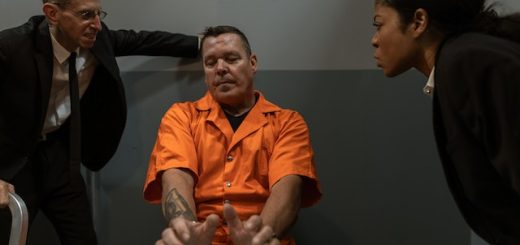R v Chouhan: Abolishment of Peremptory Challenges is Constitutionally Valid

Before September 2019, jury selection in criminal trials could be challenged by both the accused and the Crown. Section 634(1) of the Criminal Code, RSC 1985, c C-46 previously permitted both the accused and the Crown to challenge a limited number of jurors peremptorily.
Under the second type of challenge for jury selection in criminal trials, both the accused and the Crown were formerly permitted to bring an unlimited number of challenges for cause based on a list of specified grounds set out in s. 638 of the Criminal Code. Challenges for cause required the Crown or accused to prove why a prospective juror should be discharged. Under s. 640 of the Criminal Code, the validity of challenges for cause was formerly determined by lay triers (members of the jury).
In September 2019, Bill C-75, An Act to amend the Criminal Code, the Youth Criminal Justice Act and other Acts and to make consequential amendments to other Acts S.C. 2019, c. 25 [Bill C-75], was passed, which abolished peremptory challenges and substituted lay triers with judges for challenges of cause. The constitutionality of the amendments were challenged all the way to the Supreme Court of Canada (“SCC” or “the Court”) in the case of R v Chouhan, 2021 SCC 26 [Chouhan].
Background
The amendments relating to peremptory challenges were introduced after their use gained national attention in the case of R v Stanley, 2018 SKQB 27 [Stanley]. Gerald Stanley, a white farmer in Saskatchewan, was acquitted of murder and manslaughter for the death of Colten Boushie, a Cree man. There was significant criticism regarding the jury selection process, where Gerald Stanley’s defence team used peremptory challenges to exclude persons who were visibly Indigenous, resulting in all-white jury. Ultimately, this resulted in the denial of a diverse set of lived experiences and world views to assist in the pursuit of justice.
After Bill C-75 was passed, it was unclear whether the abolition of peremptory challenges would apply retrospectively as the amendments did not include transitional provisions.
Procedural History
Mr. Chouhan was charged with first degree murder in September 2016. The jury selection process was scheduled to begin on September 19, 2019, which was the same day that Bill C-75 came into effect.
At trial, Mr. Chouhan argued that the Bill’s elimination of peremptory challenges infringed his constitutional rights under ss. 11(d), 11(f) and 7 of the Canadian Charter of Rights and Freedoms [Charter]. The trial judge held that both amendments to the Criminal Code were constitutional (R v Chouhan, 2019 ONSC 5512).
Mr. Chouhan appealed the decision and it was allowed by the Ontario Court of Appeal (“ONCA”), ruling that the trial judge erred in applying the new provisions to Mr. Chouhan’s case since they applied prospectively. (R v Chouhan, 2020 ONCA 40). The ONCA affirmed the trial judge’s ruling on the constitutionality of the amendments. A closer look at the trial and the Court of Appeal decisions can be found in Julia Schabas’s comment on the submissions in Chouhan.
The Crown appealed the ONCA’s decision on the temporal application of the amendments abolishing peremptory challenges, while Mr. Chouhan cross-appealed on their constitutionality.
The Supreme Court of Canada’s Ruling
At the SCC, eight of the nine justices held that the amendments to Bill C-75 were constitutionally valid and the appeal was allowed from the bench with reasons to follow. In the ruling from the bench, Chief Justice Wagner held that a majority of the Court believed that the amendments were constitutionally valid and purely procedural. The Crown’s appeal was allowed, Mr. Chouhan’s cross-appeal was dismissed and Mr. Chouhan’s conviction was restored.
Although the SCC’s decision was almost unanimous in ruling the elimination of peremptory challenges to be constitutionally valid, the nine SCC justices split into five groups over various issues, including the temporal application of the amendments. Justice Côté was the only dissenting justice in regard to the constitutionality of the amendments, ruling that they infringed upon an accused’s constitutional rights under ss. 11(f) of the Charter (Chouhan, para 292). While Justice Abella found Bill C-75 to be constitutionally valid, she ruled that the elimination of peremptory challenges should only be applied prospectively because it affects the substantive rights of an accused to participate in the selection of a jury (Chouhan, paras 165, 206-208). Justice Côté agreed with Justice Abella with respect to this issue, namely that the elimination of peremptory challenges should only be applied prospectively (Chouhan, para 293). The remaining seven SCC justices held Bill C-75 to be constitutionally valid and that it should be applied retrospectively.
Reasoning
The decision of Chouhan will have significant implications on jury selection procedures. Based on the SCC’s decision, any accused person whose right to peremptory challenges vested before Bill C-75 was passed would not be entitled to any peremptory challenges because of the Court’s finding that the amendments be applied retrospectively.
One of the amendments of Bill C-75 gave trial judges the authority to stand aside prospective jurors from the jury selection process for “maintaining public confidence in the administration of justice or any other reasonable cause” (s. 633 of the Criminal Code). In their joint judgement in Chouhan, Chief Justice Wagner and Justices Moldaver and Brown made it clear to trial judges that using the stand aside power in Bill C-75 for “achieving a jury that approximates the diversity of Canadian society” is not necessary for maintaining public confidence (Chouhan, para 74). This means that jury diversity is not a constitutional requirement.
Furthermore, the judgement by Chief Justice Wagner and Justices Moldaver and Brown defined the extent of the existing jury protections. First, they held that trial judges should consider issuing jury instructions to overcome unconscious bias (Chouhan, para 49). They also set out guidelines for trial judges to follow in regard to questioning for challenges for cause (Chouhan, paras 63-67). They held that when dealing with challenges for cause, prospective jurors should be asked questions relevant to the case, which may include “characteristics of the accused, complainant or victim, such as race, addiction, religion, occupation, sexual orientation or gender expression” and whether they can set aside any compromising opinions or beliefs (Chouhan, para 64). Judges are given the discretion to exercise their power to exclude prospective jurors as not all jurors will not openly acknowledge any biases or prejudices that they hold (Chouhan, para 67).
In the joint judgement delivered by Justices Karakatsanis, Martin and Kasirer, they partly disagree with this description of the extent of the existing jury procedures laid out by Chief Justice Wagner and Justices Moldaver and Brown (Chouhan, paras 109-11). While they agreed with the suggestion for trial judges to consider issuing jury instructions to overcome unconscious bias, they held that it should be left to the lower courts on how the amendments to Bill C-75 should be interpreted and applied (Chouhan, paras 110-112).
In his concurring judgement, Justice Rowe agreed with the judgement delivered by Chief Justice Wagner and Justices Moldaver and Brown. However, he warned against interpreting the judgement as constitutionalizing the jury selection procedures because “[c]onstitutionalizing statutory provisions undermines the democratic principle” (Chouhan, paras 126, 141). If these statutory provisions are interpreted as constitutional requirements, this would eliminate Parliament’s ability to repeal their own enacted laws, which is clearly against the principle of parliamentary sovereignty (Chouhan, para 142).
Analysis
While the majority decision of Chouhan by the SCC held that the jury selection system offers the appropriate protections for accused persons, there is an extreme divide in terms of whether peremptory challenges are a discriminatory mechanism or whether they are safeguards for ensuring jury representativeness.
There were many submissions made by intervenors on both sides of this divide in Chouhan. There were several interveners arguing in favour of Bill C-75, such as Debbie Baptiste, the mother of the late Mr. Boushie. In her factum, she submitted that peremptory challenges are used to “discriminate against potential jurors based solely on race” and using them to “exclude presumptively impartial jurors based on race is an overt example of race-based discrimination” (Factum of Debbie Baptiste, paras 8-9). Aboriginal Legal Services also intervened and supported this argument, arguing that continued use of peremptory challenges to exclude prospective Indigenous jurors “has a corrosive impact on the jury process” and will “further stoke the reluctance of Indigenous people to participate in the jury process” (Factum of Aboriginal Legal Services, para 18). Chief Justice Wagner and Justices Moldaver and Brown supported this line of reasoning in their judgment, and characterized the true value of peremptory challenges as “doubtful” because they are “exclusive rather than inclusive in nature” (Chouhan, para 18). The use of peremptory challenges involves guess work to ascertain a prospective juror’s beliefs based on their appearance (Chouhan, para 19). Therefore, the utility value of peremptory challenges is unclear from this perspective and, as seen in the Stanley trial, their true value is uncertain as they can be used as a discriminatory mechanism to exclude Indigenous jurors.
There were also many interveners who argued against Bill C-75. One such intervenor, the B.C. Civil Liberties Association, argued that peremptory challenges served a vital role as they help mitigate racial bias by ensuring greater jury diversity and representativeness (Factum of the B.C. Civil Liberties Association, para 10). This line of reasoning was echoed by many of the other interveners arguing against Bill C-75, where the essence of the argument was that peremptory challenges served as a vital tool to create more diverse and representative juries. In her reasons, Justice Abella strongly opposed the description by Chief Justice Wagner and Justices Moldaver and Brown of the true value of peremptory challenges as “doubtful.” She held that they are an important safeguard to maintain jury diversity and is needed to “counteract the reality of discrimination and the systemic factors that tended to result in homogenous jury panels” (Chouhan, para 197).
While both sides of the peremptory challenges divide are ultimately aiming for jury representativeness, it is clear that the peremptory challenges were more effective in addressing this issue. The Bill C-75 amendments for challenges for cause and empowering judge’s with stand aside power is simply not as effective as peremptory challenges because it fails to address issues such as implicit bias. Discrimination, such as implicit bias is often hard to prove, which limits the value of challenges for cause. However, the majority of the Court did not agree with this reasoning. Chief Justice Wagner and Justices Moldaver and Brown ruled that the existing challenge for cause procedures, judicial stand aside power and anti-bias jury instructions are sufficient to protect an accused’s right to an impartial tribunal (Chouhan, para 83).
Peremptory challenges offered an accused a selection process to change the jury composition to their choosing. Despite the fact that prospective jurors are randomly selected from an extensive cross-section of the population, this does necessarily lead to representative juries. It was not critical for Parliament to decide which populations needed to be represented on a given jury because the accused had the ability to do so. The accused had the limited ability to choose a jury which catered to their liking and diversifying the jury was the responsibility of the accused. While the Stanley trial highlighted issues relating to this, the abolishment of peremptory challenges has enlarged the issue of jury diversity even further. For example, the jury selection lists from which prospective jurors are called upon may feature little Indigenous and racial representation, which compounds this issue. While the reason that Parliament abolished peremptory challenges was because they could be used to build less diverse juries, as in the Stanley trial, the judicial stand aside power is insufficient for ensuring jury diversity as it fails to address implicit biases. This may leave a significant gap in the jury selection process due to the under-representation of Indigenous and racialized individuals on juries, an issue that Parliament may have to address.
Image can be found here.







Join the conversation